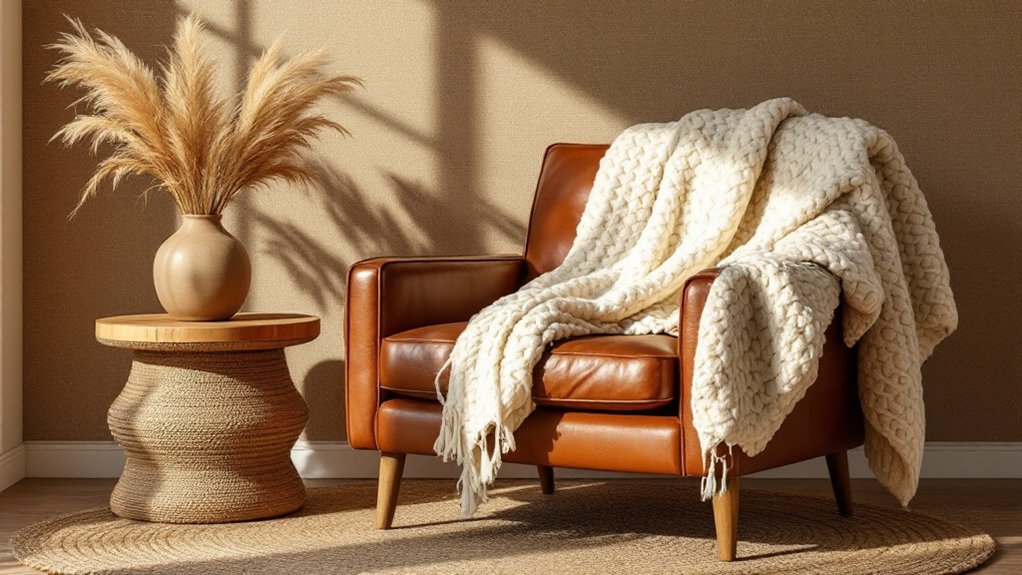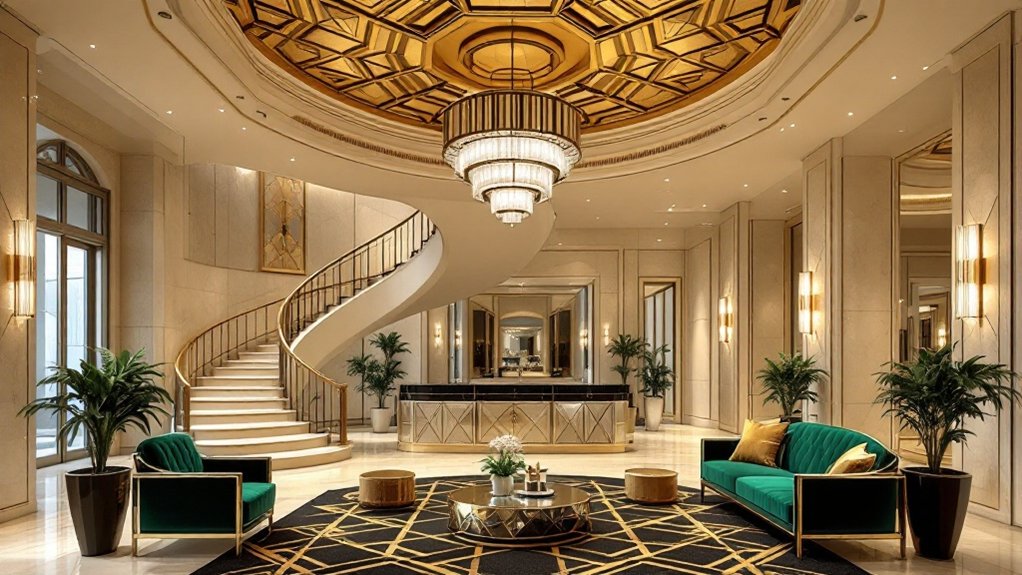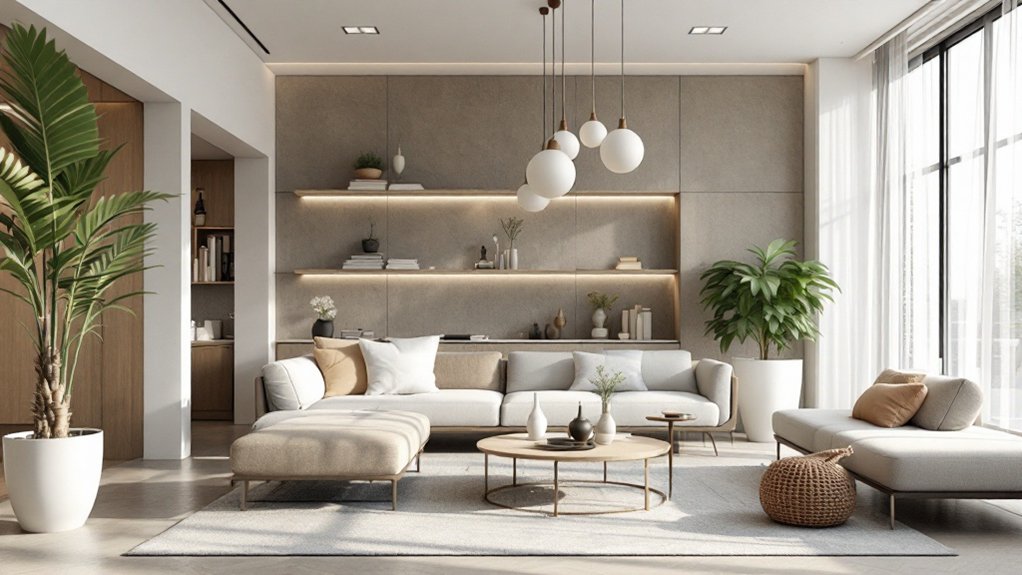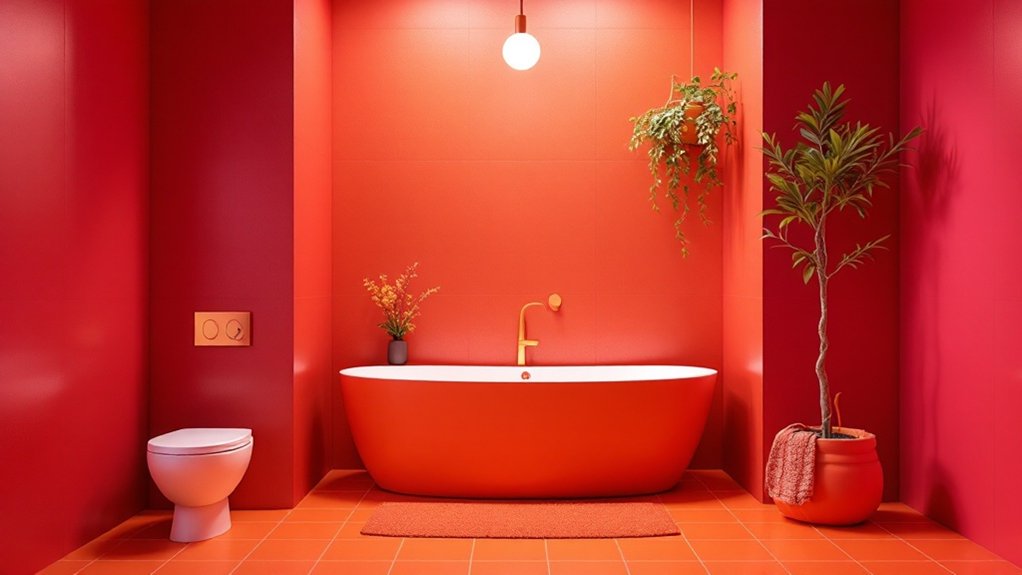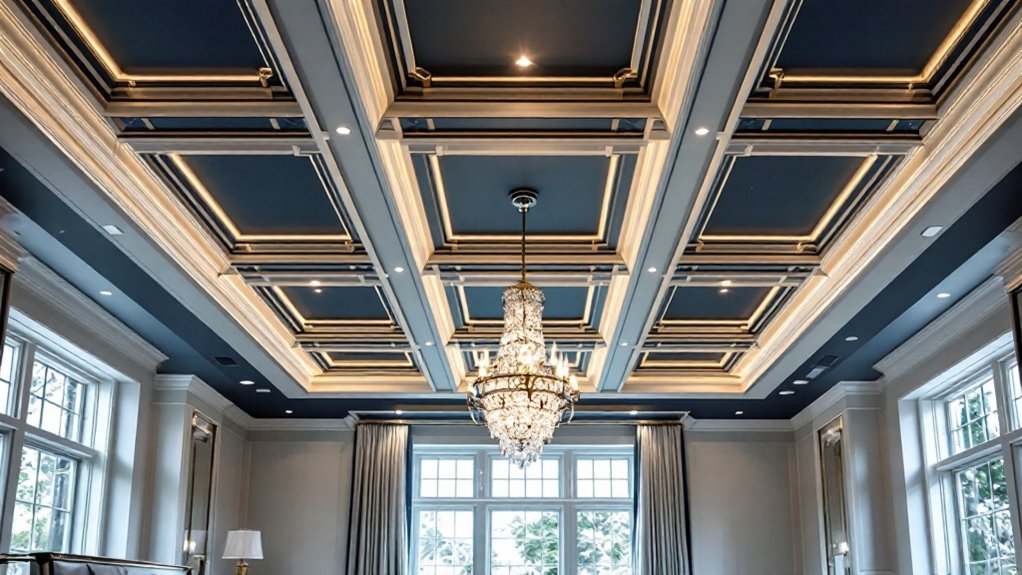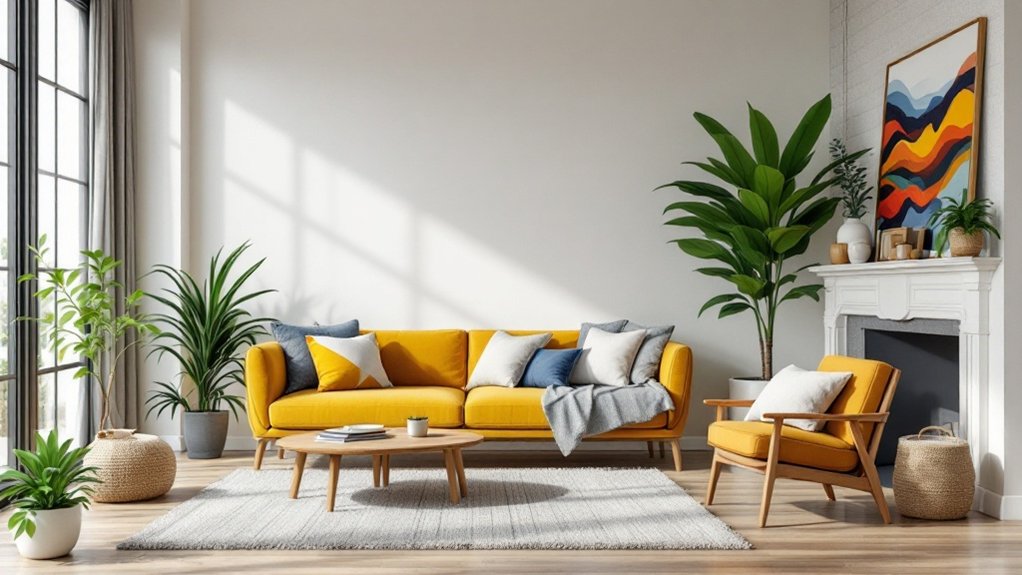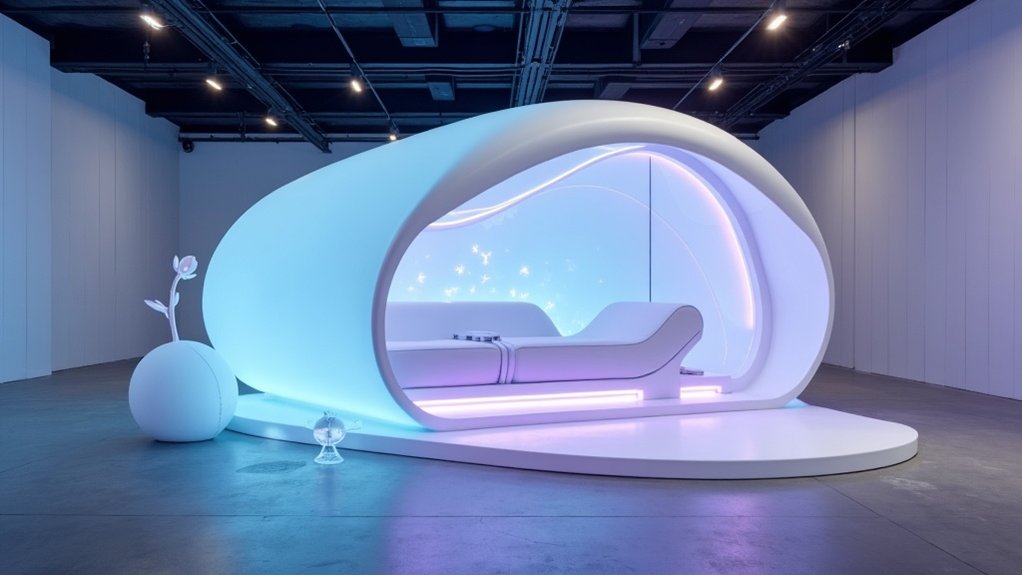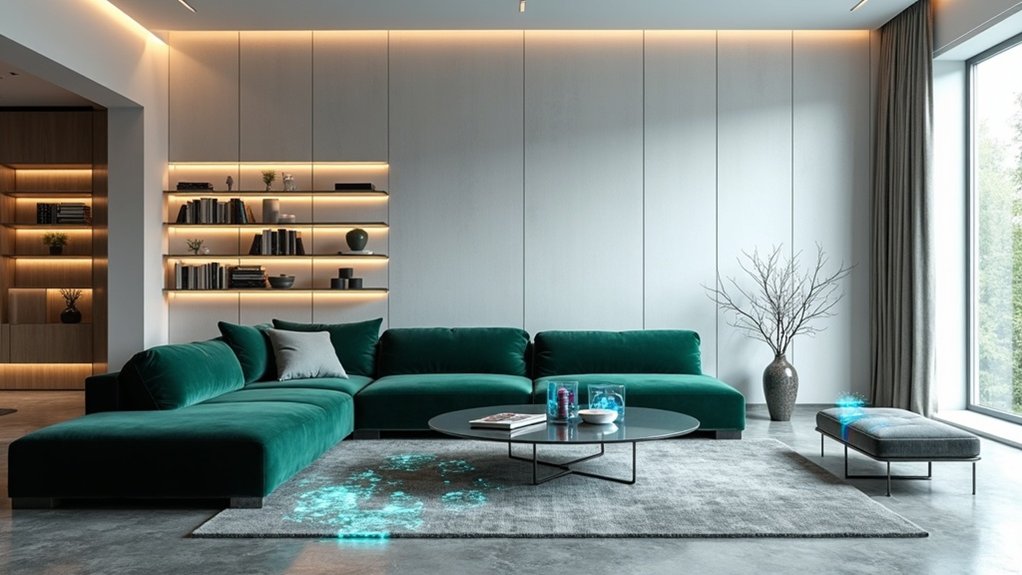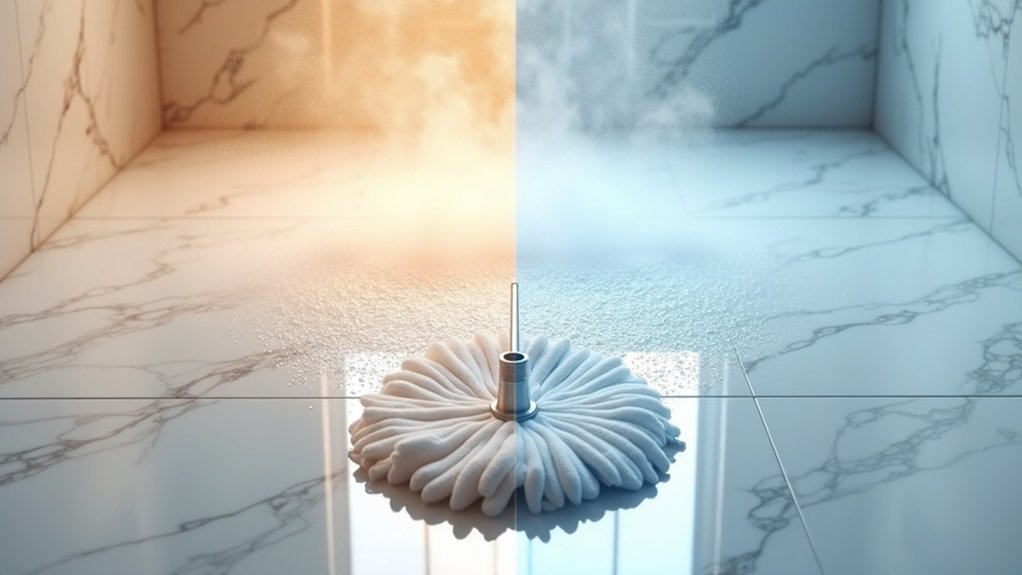Layering materials creates visual depth and functional warmth through the strategic combination of textures and surfaces. Multiple layers trap air pockets, establishing microclimates that regulate temperature while adding dimensional interest to spaces. Premium fabrics like wool and down, combined with synthetic materials, offer ideal insulation and humidity management. In both fashion and interior design, proper arrangement of complementary textures transforms environments into dynamic, three-dimensional experiences. The art of layering holds countless possibilities for those ready to investigate its full potential.
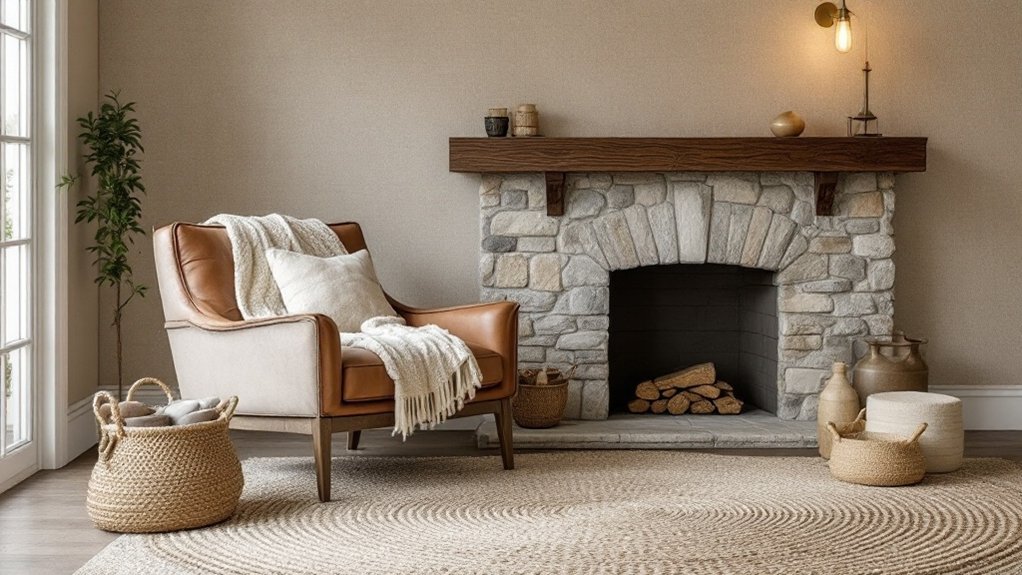
The art of layering materials transcends both fashion and interior design, creating environments rich in both visual depth and practical warmth. When various textures like wool, cotton, velvet, and leather are thoughtfully combined, they generate an intricate interplay of visual and tactile elements that enhances both comfort and aesthetic appeal. The strategic layering of these materials serves a dual purpose: enhancing the sensory experience while providing fundamental thermal regulation. Quality pieces made from premium fabrics ensure long-lasting performance and timeless style.
In interior spaces, the practice of layering becomes evident through carefully selected combinations of textiles and surfaces. Layered rugs of varying pile heights and compositions create immediate visual interest while providing practical insulation from cold floors. The addition of textured throws, plush cushions, and woven wall hangings further amplifies the sense of depth and warmth, transforming flat surfaces into dynamic, three-dimensional environments.
The principles of effective layering extend beyond aesthetics into the realm of thermal efficiency. Multiple layers trap warm air pockets between fabrics, creating a microclimate that maintains comfortable temperatures regardless of external conditions. This phenomenon mirrors the sophisticated three-layer system employed in outdoor gear, where each layer serves a specific function: moisture-wicking, insulation, and environmental protection. Even during challenging conditions, such as 27 consecutive days of rain experienced by seasoned hikers, proper layering remains crucial for maintaining comfort and safety.
Material selection plays a vital role in achieving ideal layering results. Down excels in dry, cold conditions because of its exceptional warmth-to-weight ratio, while wool maintains its insulating properties even when damp. Synthetic materials offer superior moisture management and quick-drying capabilities, making them ideal for variable conditions. The key lies in understanding how different materials interact and complement each other's properties.
The success of layering depends significantly on proper fit and arrangement. Whether in clothing or interior design, layers must work in harmony without restricting movement or creating unwanted bulk. This delicate balance requires careful consideration of material thickness, texture, and arrangement to achieve both functional efficiency and aesthetic harmony.
Through thoughtful selection and combination of materials, layering creates environments that are not only visually engaging but also practically comfortable across varying conditions.
Frequently Asked Questions
How Do You Maintain Textured Materials Without Damaging Their Unique Surface Characteristics?
Proper maintenance of textured materials requires gentle cleaning techniques and preventive care.
Soft-bristled brushes and non-abrasive vacuum attachments effectively remove dust without compromising surface integrity. Regular cleaning with mild detergents and warm water prevents dirt buildup in deeper textures.
Environmental controls, particularly stable humidity levels, help prevent cracking and peeling. Protective coatings can be applied to specific surfaces, while prompt attention to dampness issues prevents long-term deterioration.
What Are the Best Lighting Options to Enhance Layered Textures?
Effective lighting design employs multiple layers to improve textural depth. Ambient lighting from ceiling fixtures provides an even foundation, while targeted task lighting reveals subtle surface variations.
Accent lighting, such as directional spotlights and wall washers, emphasizes specific textures and creates visual interest. Decorative fixtures with varied materials and heights add dimensional complexity.
High CRI bulbs (90+) at warm color temperatures (2700-3000K) guarantee ideal texture visibility and material authenticity.
Can Textured Materials Be Effectively Used in Small Spaces?
Textured materials can be strategically utilized in small spaces to create depth and visual interest without overwhelming the environment.
By combining smooth surfaces like glass or polished metals with tactile elements such as woven textiles or natural wood, designers can establish distinct zones and improve spatial perception.
The key lies in balanced implementation—incorporating varied textures through accent pieces, wall treatments, and soft furnishings while maintaining a unified visual flow throughout the space.
Which Textured Materials Are Most Suitable for High-Traffic Areas?
For high-traffic areas, industrial-grade carpet tiles with TARR ratings above 3.5 and porcelain tiles offer superior durability.
Textured luxury vinyl planks provide excellent wear resistance, while poly extruded matting delivers ideal slip protection in wet zones.
Dense fiber carpeting with tight twist yarns and short pile heights maintains appearance in spite of heavy use.
Modular options like carpet tiles allow for selective replacement of worn sections, making them particularly cost-effective for busy commercial spaces.
How Do You Prevent Different Textures From Competing With Each Other?
To prevent competing textures, designers emphasize establishing a clear visual hierarchy and maintaining balanced proportions.
Starting with a neutral foundation allows statement pieces to shine without clashing. Limiting the palette to 3-4 main colors helps unify diverse textures, while varying the scale of patterns prevents visual competition.
Strategic placement of contrasting elements (rough vs. smooth, matte vs. glossy) creates interest without overwhelming the space when thoughtfully immersed.
